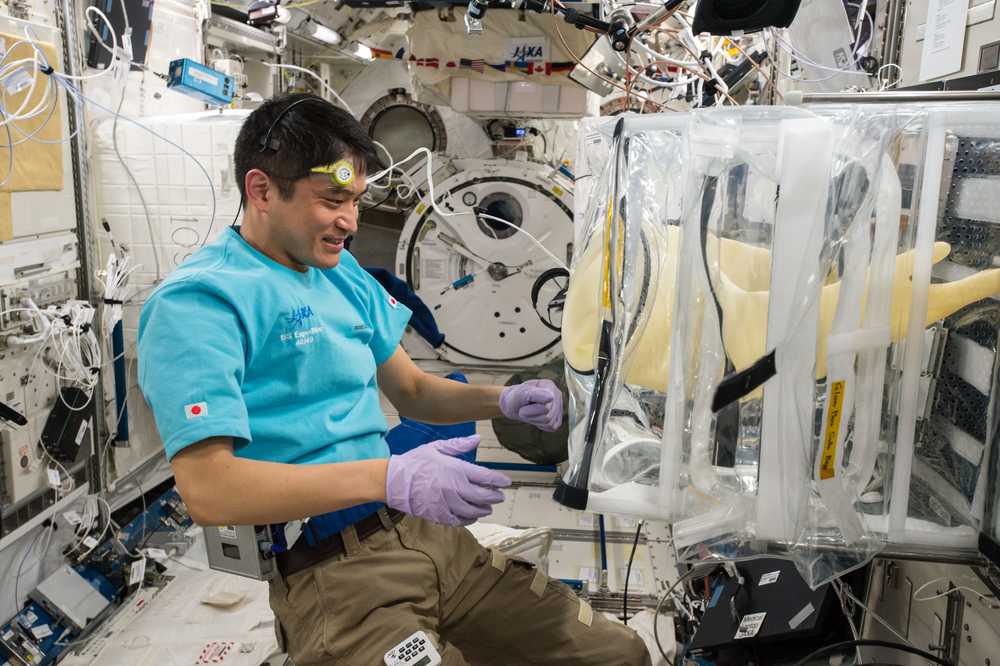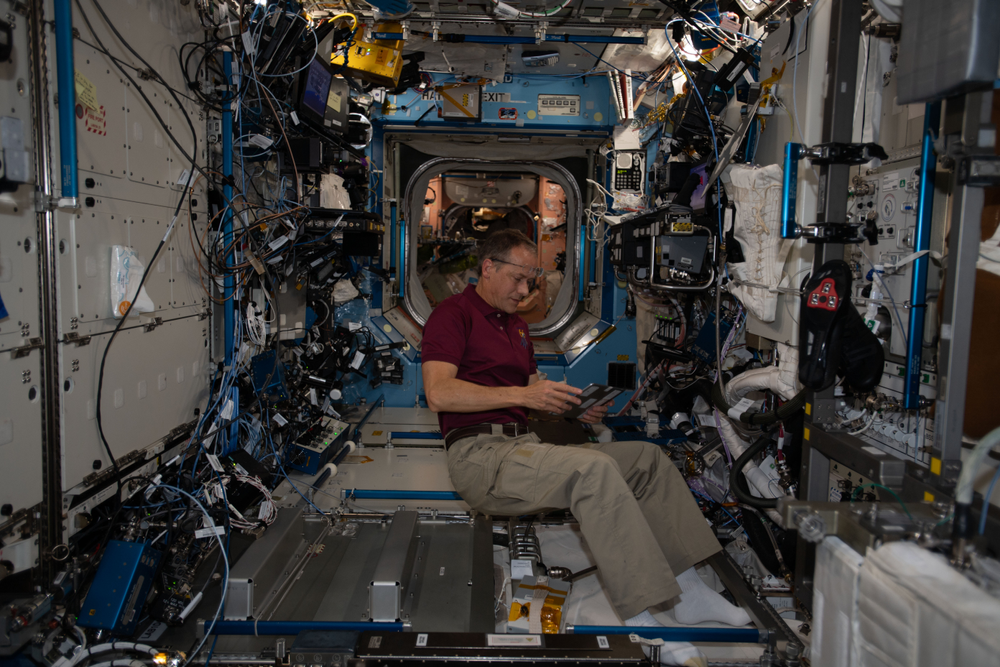Station Science Top News: June 2, 2023
Researchers examining skeletal muscle changes in mice found that at least one-sixth g. is needed to prevent atrophy, but a greater gravitational force is required to fully protect muscle mass. This discovery contributes to improving therapies to maintain skeletal muscle health in astronauts.
MHU-1 or Mouse Epigenetics sent 12 mice to the International Space Station for 30 days and then returned them to Earth for detailed analysis. This paper reported results from using an artificial-gravity research system in space to study the effects of microgravity, lunar gravity (one-sixth g.), and 1 g. on the skeletal muscle mass and myofiber constitution of the mice.

***
Two bacteria species from a six-species community found in the space station potable water system together contributed to enhanced formation of robust biofilms. This finding could help improve the safety of the water system.
ISS Internal Environments examined air, water, and surfaces aboard the orbiting laboratory to provide insight into environmental contamination. Biofilms contribute to material corrosion and affect water taste and safety. The microbial communities within these systems are diverse but have many species that are common, including Ralstonia insidiosa and Chryseobacterium gleum, the two species responsible for the enhanced biofilm formation.

***
A feature on the ISS Research and Technology page highlights scientific investigations on the 28th SpaceX commercial resupply mission, including:
- Thor-Davis, an investigation from ESA (European Space Agency) that observes electrical activity in thunderstorms to determine their effect on the atmosphere, improve atmospheric models, and increase understanding of Earth’s climate and weather.
- PH-03, which assesses whether plants grown in space transfer epigenetic adaptations to the next generation and could support growing multiple generations of plants to provide food and other services on future space missions.
- ESSENCE, sponsored by the ISS National Lab and developed by universities in Canada and Australia, which monitors thawing of ice and permafrost in the Canadian Arctic to provide a better understanding of the effects on Earth's climate.
Read more here.
***
The ISS Program supported outreach at Comicpalooza, a comic book, science fiction, anime, and gaming convention held on May 26 to 28 at the George R. Brown Convention Center in Houston. Active engagement with the combined NASA program totaled more than 7,000 people, with an additional 7,000 or so casual engagements.
Active engagement is when event participants interacted with folks in the booth, casual engagement is when participants picked up a handout or paused to look at a display but did not interact.
Images here.







